18 Types Of Avocados: Health Benefits, Nutrition, And More
While many people are familiar with avocados, there’s a common misconception that all types are created equal. In reality, each variety offers its own unique set of nutritional benefits and characteristics. From the taste to the texture, the differences between avocado types can be significant. This article will delve into the world of avocados, exploring not only their health benefits but also providing recipes for incorporating them into your diet.
We’ll also touch on how to choose the perfect avocado, grow and care for avocado trees, and answer some frequently asked questions. Avocado enthusiasts may be surprised to learn that there are over 36 recognized varieties, each with its own distinct flavor profile and nutritional makeup. Some popular types include Choquette, Gwen, Hass, Lula, Maluma, Mexicola, Pinkerton, Reed, and Wurtz.
For instance, the Choquette avocado is known for its sweet, nutty flavor and creamy texture, while the Gwen avocado has a slightly sweeter taste with a hint of tanginess. In addition to exploring the different types of avocados, we’ll also discuss how to make informed choices when selecting an avocado at the grocery store. With so many options available, it’s essential to know what to look for in terms of ripeness, texture, and flavor profile.
Of course, no discussion about avocados would be complete without exploring their health benefits. Avocados are a nutrient-rich food that can help support heart health, digestive health, and even weight management. Whether you’re looking to reduce belly fat or simply add more healthy fats into your diet, avocados are an excellent choice.
In this article, we’ll also provide some tips for growing and caring for avocado trees, as well as answer some frequently asked questions about these popular fruits. So whether you’re a seasoned avocado enthusiast or just starting to explore the world of avocados, there’s something for everyone in this comprehensive guide.
What is avocado?
Native to Mexico and Central America, the avocado tree produces a fruit that shares its name. Classified as a type of berry, avocados boast a distinctive green skin and yellow-green flesh. These versatile fruits can be found in a variety of dishes, from salads and sandwiches to the iconic guacamole. In addition to their culinary applications, avocados are also a rich source of essential nutrients like fiber, vitamins C, E, and K.
Furthermore, they contain monounsaturated fat, a healthy type of fatty acid that is beneficial for overall health. While avocados do pack a significant caloric punch, moderation is key to reaping their nutritional benefits.
Benefits of Avocados
Avocados have been touted as a superfood for good reason – they’re an exceptional source of healthy fats, fiber, and essential vitamins. Their unique nutritional profile makes them an excellent addition to any weight loss or health improvement regimen. In fact, avocados can play a significant role in several key areas of overall well-being.
One of the most notable benefits of avocados is their ability to support weight loss efforts.
The combination of high fiber and low calorie content makes them an ideal food for those looking to shed pounds and maintain a healthy weight. Additionally, avocados’ unique fatty acid profile has been shown to improve cholesterol levels and promote overall cardiovascular health.
But that’s not all – avocados are also a rich source of vitamins, minerals, and antioxidants, making them an excellent way to boost your overall health.
From improved digestion to enhanced immune function, the benefits of incorporating avocados into your diet are numerous and well worth exploring.
A-Type Cultivars
A-type cultivars are the most widely cultivated and commercially grown variety of avocados, prized for their impressive size and bountiful harvest yields. These avocados thrive in warm climates, where they can be grown year-round, whereas other varieties often have a longer growing season.
Choquette Avocados
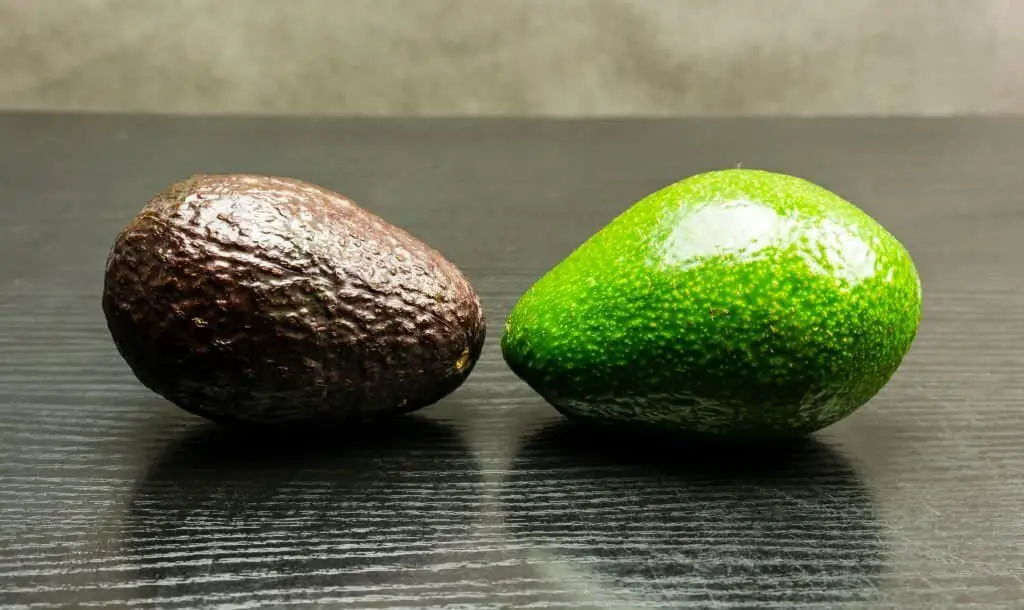
The Choquette avocado is a distinct variety that originated in Choquette, California. Characterized by its petite size and dark green skin, this fruit boasts a rich flavor profile and creamy texture. Its popularity stems from its ability to elevate guacamole with its robust taste, making it a staple in many recipes. Additionally, the Choquette avocado is often used as a topping for tacos, burgers, and salads, offering a burst of freshness to any dish.
When it comes to its taste, the Choquette avocado’s flavor profile is shaped by its hybrid parentage – combining Guatemalan and Mexican varieties. While slightly larger than the Hass avocado, the Choquette boasts a vibrant green color on the inside, accompanied by a nutty flavor. Although not as creamy as some other types of avocados, the Choquette remains a delicious choice for those seeking a flavorful addition to their meals.
Gwen Avocados
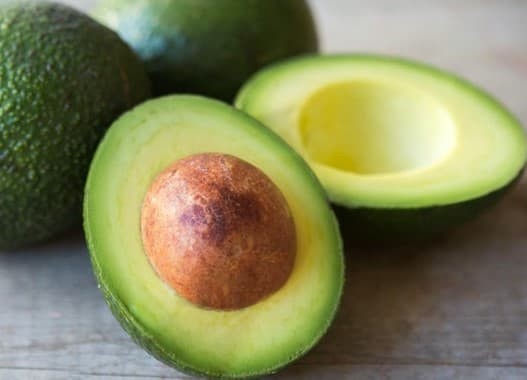
Gwen avocados are a variety of this nutritious fruit that originated in California and derive their name from the city of Gwendolyn. Characterized by their small size and green skin, they have earned the reputation of being a ‘superfood’ due to their exceptionally high nutrient content.
In terms of health benefits, consuming Gwen avocados has been linked to a range of advantages, including lowering cholesterol levels, improving heart health, boosting immune function, reducing the risk of certain cancers, and promoting healthy skin and hair.
In terms of taste, Gwen avocados are incredibly creamy and boast a rich, nutty flavor that is hard to resist. Whether enjoyed on its own or used in a recipe, this fruit’s unique flavor profile is sure to leave you craving more.
Hass Avocados
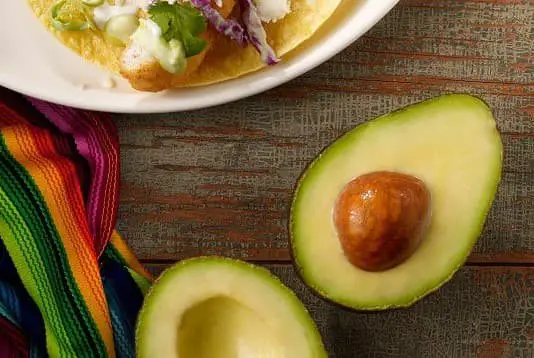
Rudolph Hass’s namesake avocado boasts a distinct characteristic – its dark green or black skin. This unique feature sets it apart from other types, which often have lighter hued skin. The Hass avocado is not only visually striking but also offers a rich, creamy flavor profile, making it a popular choice for guacamole and various culinary applications. In terms of size and shape, Hass avocados tend to be larger and more oval in nature compared to other varieties.
Furthermore, they are an excellent source of essential vitamins C and E, as well as potassium, providing a wealth of nutritional benefits. Additionally, the monounsaturated fats present in Hass avocados have been shown to contribute to lower cholesterol levels.
Lula Avocados
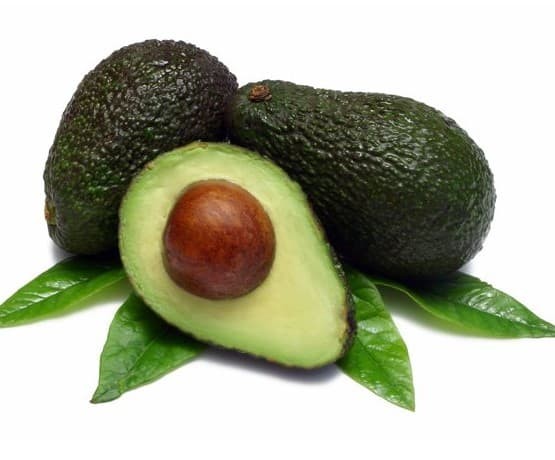
The Lula avocado stands out from its peers due to its striking appearance, boasting a dark green skin and a distinctive pear-shaped body. Originating from the state of Michoacán in Mexico, this variety thrives as small to medium-sized trees that reach a height of approximately 15 feet (4.5 meters). Its glossy, dark green leaves are complemented by white flowers that add to its visual appeal.
The Lula avocado’s oval-shaped fruits are characterized by their dark green skin and average weight of around four ounces (113 grams). While not as widely recognized as other varieties, the Lula avocado has been gaining popularity in recent years due to its unique flavor profile and impressive nutritional profile, which features a richness in monounsaturated fats, fiber, vitamins, and minerals. What’s more, it boasts a lower calorie content compared to many other types of avocado.
The Lula avocado is an excellent addition to any meal, offering versatility as a base for salads, sandwiches, sauces, and dips. Its rich flavor pairs exceptionally well with various ingredients, making it an ideal component in numerous recipes.
Maluma Avocados
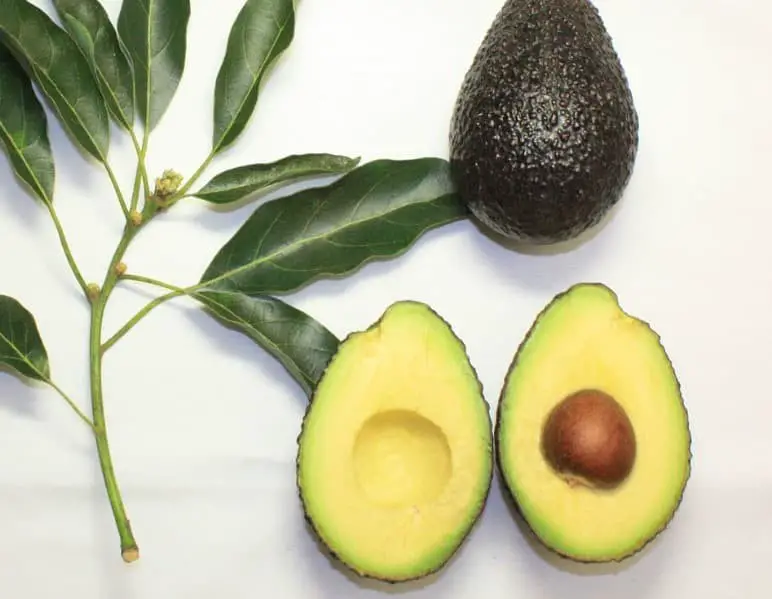
In the heart of Mexico, specifically in the state of Michoacán, lies the origin of Maluma avocado. This unique variety takes its name from the town of Maluma, where it was first cultivated. Characterized by its small to medium size and striking dark green or black skin, the fruit’s creamy white flesh boasts a subtle nutty flavor that adds depth to any dish. As a staple in Mexican cuisine, Maluma avocado is often used in traditional recipes such as guacamole.
Its popularity has also been growing in the United States, where it is becoming increasingly accessible at local grocery stores and farmers markets, allowing food enthusiasts to experience its distinct taste and texture.
Mexicola Avocados
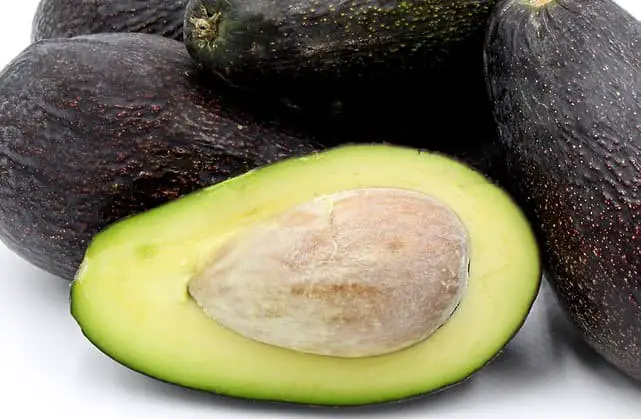
Mexicola avocado, a native Mexican variety, boasts a rich, creamy flavor profile. Characterized by its small size and dark green hue, the fruit’s thin skin provides an inviting appearance. The Mexicola tree, a compact evergreen, reaches 15 feet in height and features dark green, glossy leaves with a leathery texture. Spring heralds the blooming of small, greenish-yellow flowers.
Harvesting typically occurs between October and December, when the fruit is ripe for use in guacamole and other traditional Mexican dishes. Fresh consumption is also an option, as the Mexicola avocado can be enjoyed sliced or diced on salads, sandwiches, or as a standalone snack.
Pinkerton Avocados
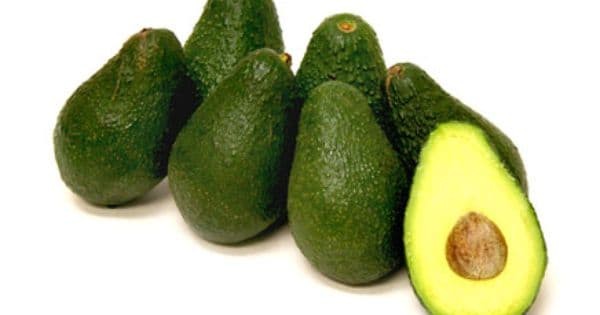
The Pinkerton avocado, a cultivar of Persea americana, originated in California and bears a striking resemblance to the fruit’s natural hue. This variety is attributed to Walter T. Pinkerton, who pioneered its cultivation in the early 20th century.
Pinkerton avocados have gained immense popularity in California, often finding their way into salads and guacamole preparations. Their unique characteristics have solidified their position as a favorite among locals.
When selecting a Pinkerton avocado, seek out one that boasts impressive weight relative to its size and features a smooth, greenish-yellow skin. Conversely, steer clear of any avocados bearing brown spots or blemishes, as these may compromise the fruit’s quality.
Reed Avocados
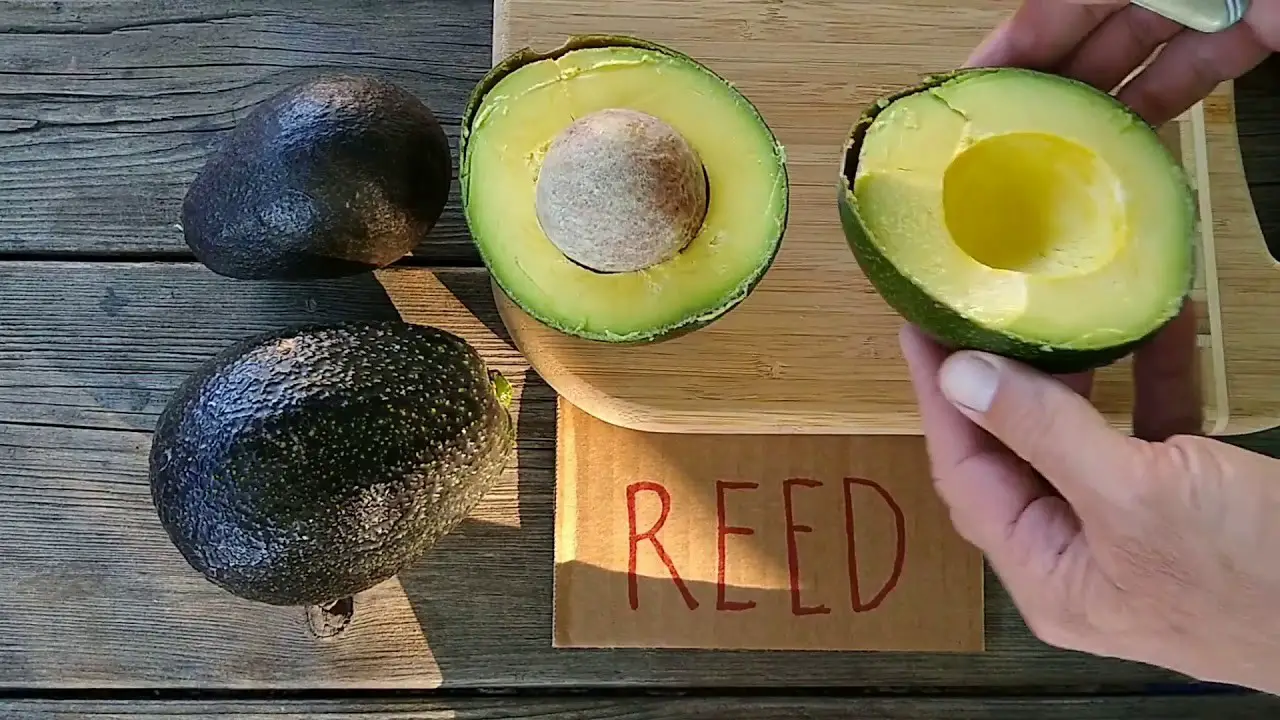
In California’s Reed region, a unique variety of avocado was first cultivated. The Reed avocado fruit measures small to medium in size, with a striking dark green or black exterior. Its creamy flesh boasts a nutty flavor profile, setting it apart from other more widely available varieties.
While not as ubiquitous as other types, the Reed avocado can be sourced at specialty grocery stores, making it a hidden gem for adventurous eaters and food enthusiasts.
Wurtz Avocados
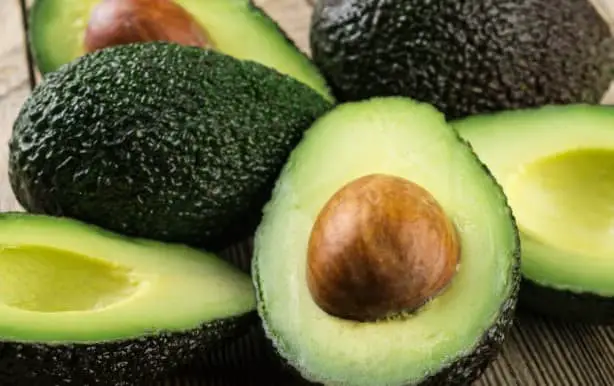
Wurtz avocados possess a unique combination of characteristics that set them apart from other varieties. Their dark green skin encases a creamy interior with a mild, nutty flavor profile. The story behind their discovery is equally fascinating – named after Walter Wurtz, the individual who first spotted them growing on California trees in the early 1900s. Today, they’re a beloved choice among Americans, frequently incorporated into salads and used as a topping for burgers and sandwiches.
The nutritional benefits of Wurtz avocados are particularly noteworthy. As a rich source of dietary fiber, vitamins C, E, and K, and healthy monounsaturated fats, this variety offers a multitude of advantages when consumed as part of a balanced diet.
B-Type Cultivars
Characterized by their distinctive pear-like shape, B-type avocados boast a unique set of characteristics that set them apart from other cultivars. The skin of these avocados is remarkably thin and smooth, taking on a greenish-yellow hue. But it’s what lies beneath that truly sets the B-type apart: the creamy flesh has a nutty flavor profile that’s sure to delight even the most discerning palates.
Bacon Avocados
While bacon avocado may seem like an oxymoron, this fruit is surprisingly a unique hybrid that combines the characteristics of avocados with the savory flavor of bacon. Native to Central America and first introduced to the US in the early 1900s, the bacon avocado boasts a creamy texture and a mild, smoky taste. Its versatility allows it to be consumed raw, cooked, or used as a condiment, making it an exciting addition to various recipes.
Furthermore, this fruit is rich in essential nutrients such as vitamins C and E, potassium, fiber, and monounsaturated fats, which are renowned for their health benefits, particularly in supporting heart health.
Brogden Avocados
The Brogden avocado boasts a unique combination of characteristics that set it apart from other varieties. Its dark green skin is just the beginning, as it also possesses an exceptionally high oil content. While its origins lie in Australia, where it was first cultivated by Walter Brogden, a pioneering Australian horticulturist, today it can be found thriving in several countries including New Zealand, South Africa, and the United States.
The avocado’s rich history is closely tied to that of its discoverer, who stumbled upon the tree on a Queensland farm in the early 1900s. As a result of this chance discovery, the Brogden avocado has become renowned for its luscious, creamy flesh and nutty flavor profile. This variety’s versatility has led it to be frequently incorporated into salads and sauces, where its distinct characteristics truly shine.
Cleopatra Avocados
The Cleopatra avocado owes its name to the legendary Egyptian queen, Cleopatra VII, but its origins lie in Egypt itself, where it was first cultivated. This unique fruit boasts an oval shape and a vibrant greenish-yellow hue on its skin. When you cut into it, you’ll be treated to creamy flesh that exudes a subtle nutty flavor. Despite being relatively rare in the United States, Cleopatra avocados can still be tracked down in select specialty stores.
If they elude you, rest assured that other avocado varieties will provide a suitable substitute.
Ettinger Avocados
Ettinger avocados, also known as ‘Mexican Avocados’ or ‘Hass Avocados’, originate from Mexico. Their pear-shaped fruit features a dark green skin that conceals a creamy yellowish-green flesh. This popular variety in Mexico offers an array of nutritional benefits, including vitamins A, C, and E, potassium, fiber, and monounsaturated fat – the latter being considered a healthy fat. As a staple in Mexican cuisine, Ettinger avocados are often used to create delicious guacamole.
Fuerte Avocados
Originally hailing from Mexico, the Fuerte avocado has since spread its roots to various parts of the world. Its unique pear-shaped appearance and vibrant green skin make it a standout among other avocado varieties. When you take a bite, you’ll be treated to creamy flesh with a delightful nutty flavor profile.
The Fuerte avocado’s journey to global recognition began in the early 1900s when it was first introduced to the United States.
Initially grown in California and Florida, its popularity only continued to grow, with today seeing widespread cultivation not just in these two states but also in Mexico, Chile, Peru, and other countries.
Monroe Avocados
The Monroe avocado, a hybrid cultivar of Persea americana, was bred for cold tolerance by Dr. Robert J. Burr at the University of California, Riverside, and introduced commercially in 1968. This popular variety in California is characterized by its large size, high oil content, and creamy texture, earning it a reputation as a ‘superior’ avocado due to its exceptional flavor and nutritional profile.
The Monroe avocado tree is an impressive evergreen that can reach heights of up to 20 feet, with glossy green leaves and oval-shaped fruit featuring smooth, dark green skin. Its high-yielding nature allows for the production of up to 200 fruits per tree, each boasting a rich, creamy texture and high oil content. Considered one of the best-tasting avocados, it’s often used in salads, sandwiches, and dips.
Sharwil Avocados
The Sharwil avocado, grown exclusively in Hawaii, boasts an impressive reputation as one of the most sought-after varieties in the state. Its exceptional qualities lie in its luscious texture and bold flavor profile. While other avocados may pale in comparison, the Sharwil stands tall with its larger-than-average size and striking dark green skin featuring a deep purple undertone. The fruit’s light green flesh, boasting a silky smoothness, further solidifies its reputation as a culinary delight.
Sharwil avocados typically reach their peak ripeness from late summer to early winter, making them a prized treat during the cooler months.
Sir Prize Avocados
The Sir Prize avocado, a hybrid of Haas and Fuerte varieties, was first cultivated in the early 1990s in Australia. Notably larger than its Haas counterpart, it features a distinctive greenish-yellow skin. This unique avocado is prized for its rich, creamy texture and nutty flavor profile. It’s often incorporated into salads, sandwiches, soups, and tacos, serving as a versatile and flavorful garnish or main ingredient.
Zutano Avocados
This small, round Zutano avocado boasts a vibrant greenish-yellow exterior that belies its rich, creamy flesh. The nutty flavor is truly delightful, making it one of the most sought-after avocados globally. Its origins date back to Mexico, where it was first cultivated before being introduced to California in the early 1900s. Today, Zutano avocado trees thrive in many countries worldwide, including the United States, Chile, Peru, and Australia.
How to choose the healthiest avocado
When selecting an avocado, several key factors come into play. First and foremost, it’s essential to ensure that the fruit is ripe. An unripe avocado will be hard to the touch and resistant to gentle pressure. Next, take a closer look at the skin of the avocado. Any visible blemishes or bruises can indicate overripeness or damage. Finally, consider the weight of the avocado in relation to its size. A heavier avocado suggests it’s packed with healthy fats and nutrients.
Once you’ve found an avocado that meets these criteria, it’s time to get cutting! Start by slicing the fruit in half lengthwise, then twist the halves in opposite directions to separate them. From there, use a spoon to scoop out the creamy flesh. Depending on your recipe or personal preference, you can then slice, dice, or mash the avocado with ease.
How to grow avocado trees
To cultivate an avocado tree, initiate the process by acquiring a seedling from a reputable nursery or supplier. Select a location with well-drained soil that receives direct sunlight for at least six hours a day. Regular watering is crucial, and consider supplementing the natural rainfall with irrigation as needed. Additionally, provide nutrients through monthly fertilization to promote healthy growth.
As your tree matures to approximately three feet in height, you’ll be able to start enjoying the fruits of your labor – quite literally! Avocado harvesting can begin once the tree reaches this milestone, allowing you to enjoy a bountiful crop.
How to care for avocado trees
Avocado trees are a popular choice among home gardeners due to their low maintenance requirements and bountiful fruit production. However, there are some key considerations to keep in mind when cultivating these trees to ensure they remain healthy and productive.
For optimal results, adopt the following care strategies: Water your avocado trees thoroughly and consistently, especially during the warmer months, aiming for at least one weekly watering with more frequent applications if the weather is particularly hot or dry. Mulching around the tree’s base can also help retain moisture and keep roots cool.
Twice-yearly feedings of a balanced fertilizer will provide essential nutrients, while regular pruning ensures the removal of dead or diseased branches, promotes new growth, and maintains overall tree health.
FAQs about avocados
Do avocados reduce belly fat?
While it may come as no surprise that avocados can contribute to a flatter stomach, the truth is that these creamy fruits do indeed have a role to play in reducing belly fat. The key lies in their impressive fiber content, which not only helps regulate appetite and prevent overeating but also fosters a healthy gut environment by promoting the growth of beneficial bacteria.
Additionally, avocados’ low calorie count means they can be enjoyed without worrying about adding excess pounds, while their rich supply of unsaturated fats works to combat inflammation and support overall digestive well-being.
Hass avocado vs regular avocado.
The Hass avocado, originating from California, is distinguished by its dark, bumpy exterior and compact size compared to other varieties. Its widespread popularity in the United States makes it the most sought-after type of avocado. On the other hand, regular avocados are typically found in grocery stores, boasting smooth, green skin and a larger size than their Hass counterparts.
While they’re also grown in California, they fail to match the allure of Hass avocados, which remain the top choice among American consumers.
Which type of avocado is the healthiest?
Avocado varieties are often categorized into three primary types: California, Florida, and Mexican. While sharing some similarities, each cultivar boasts a distinct nutrient composition. The differences in their profiles can be attributed to factors such as climate, soil, and cultivation practices.
Should I eat avocado every day?
While avocados are renowned for their nutritional benefits, including fiber, potassium, and healthy fats, it’s essential to consider the calorie content when incorporating them into your diet. A daily intake of one avocado may be beneficial for those looking to lose weight or improve their dietary habits. In contrast, individuals without weight loss goals can enjoy avocados in moderation, without restrictions.
Conclusion
Avocados come in three primary varieties: California, Florida, and Mexican. Each has its unique characteristics, including distinct flavors and textures. Selecting the right one for your recipe is crucial, as they can significantly impact the final result. For a rich, creamy avocado with hints of nuttiness, the California variety is an excellent choice. If you prefer a slightly firmer avocado with a milder flavor profile, the Florida type might be the way to go.
Alternatively, if you’re seeking an avocado with a deep, buttery taste, the Mexican option is the clear winner. Regardless of which variety you choose, make sure to savor its deliciousness.
Related Posts
While the initial query seems unrelated, this part of the blog post explores the potential benefits and limitations of fig fruit for individuals living with diabetes. The discussion delves into the nutritional value of figs, their glycemic index, and how they can be incorporated into a balanced diet. The analysis also touches on the evolution of Japanese street food, from traditional markets to modern gourmet experiences.
Additionally, the article provides an introduction to Memphis-style barbecue for newcomers, including tips on making a delicious BBQ sauce. Furthermore, it covers what pairs well with boudin sausage and offers insights on superfoods suitable for canine consumption.






